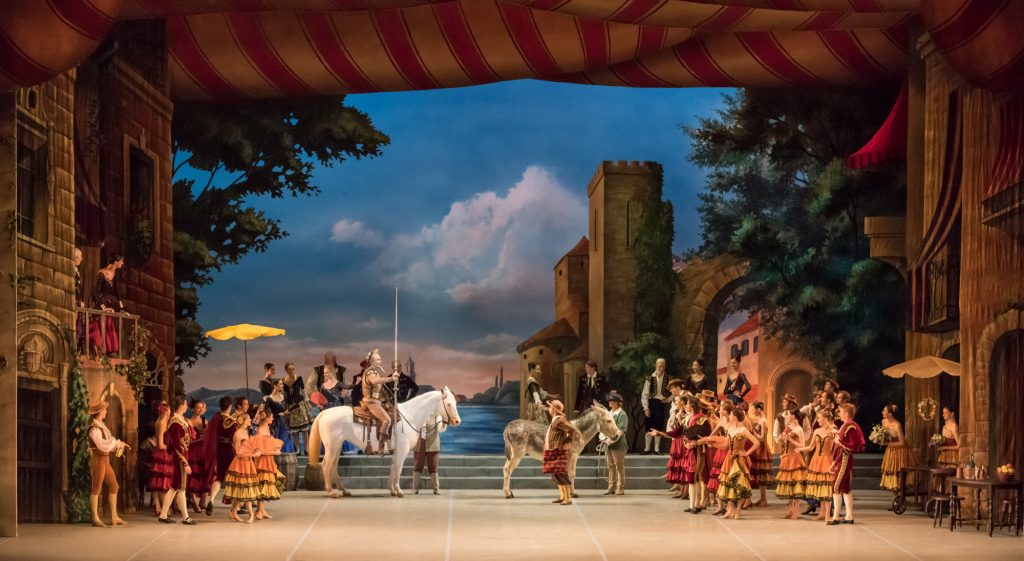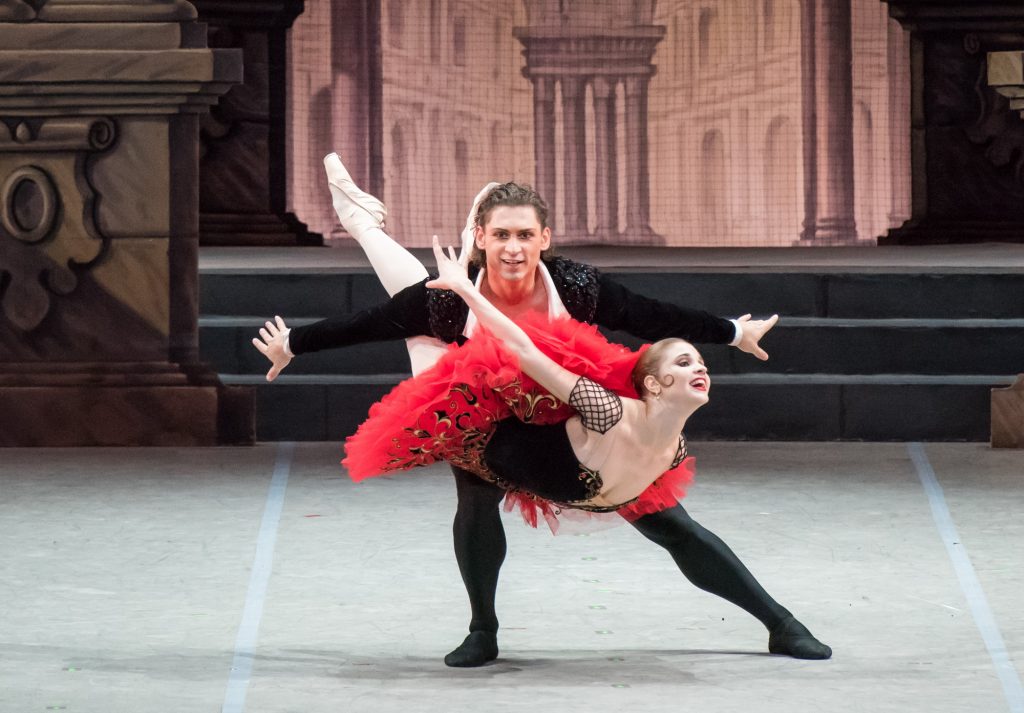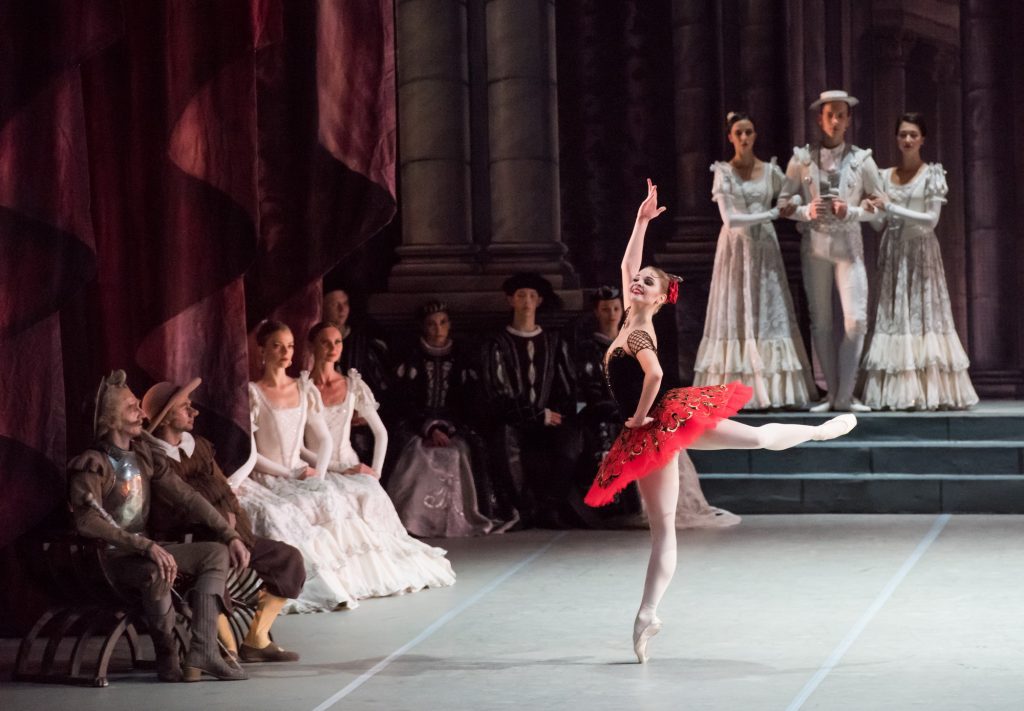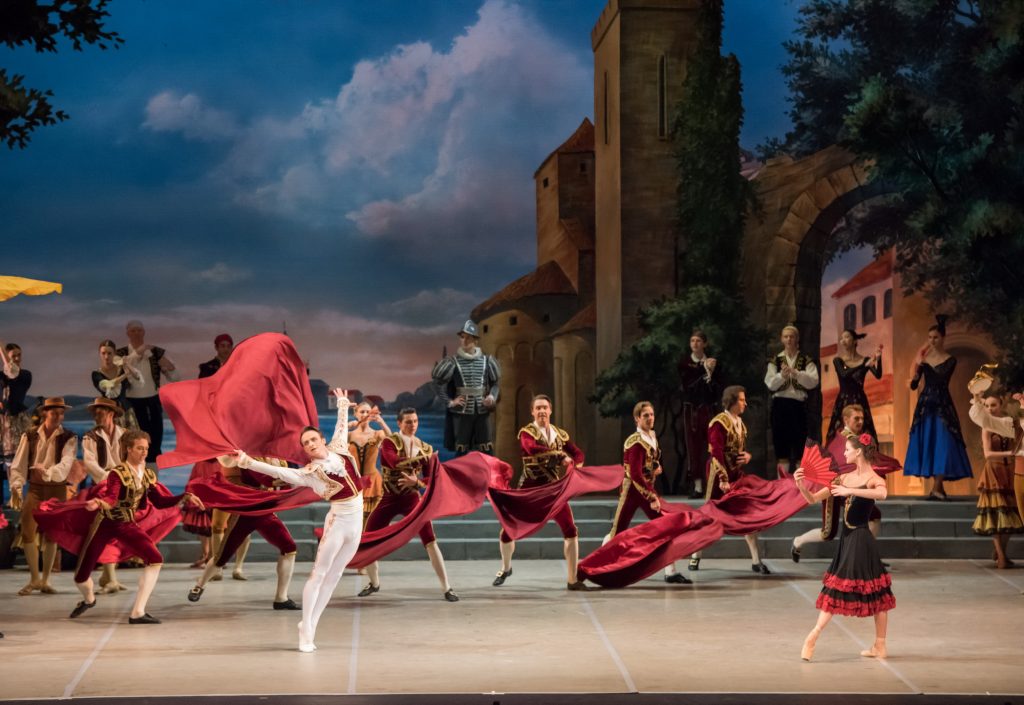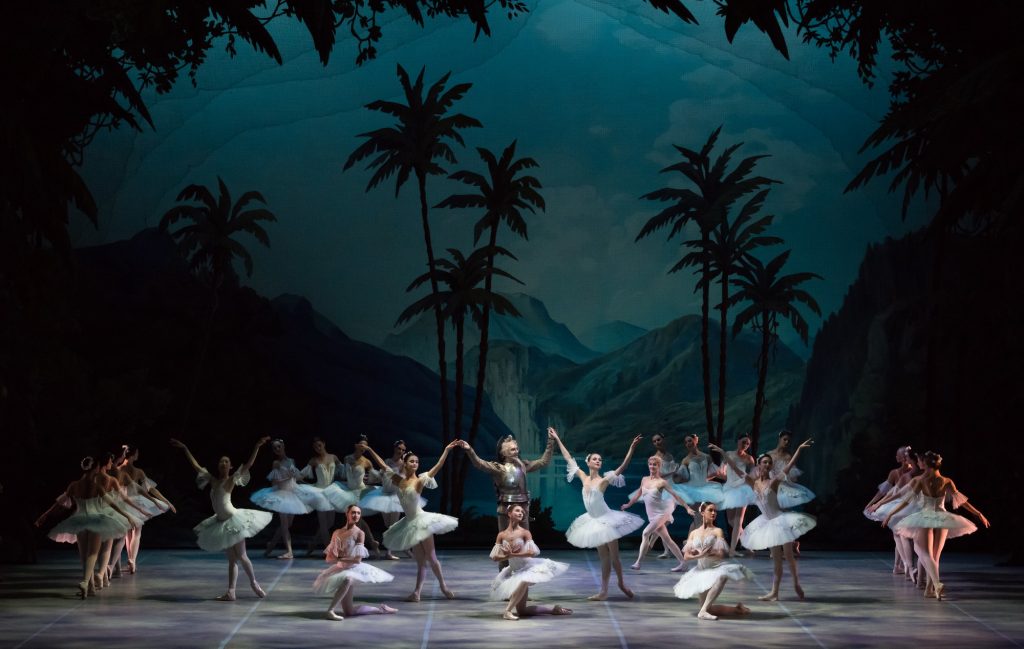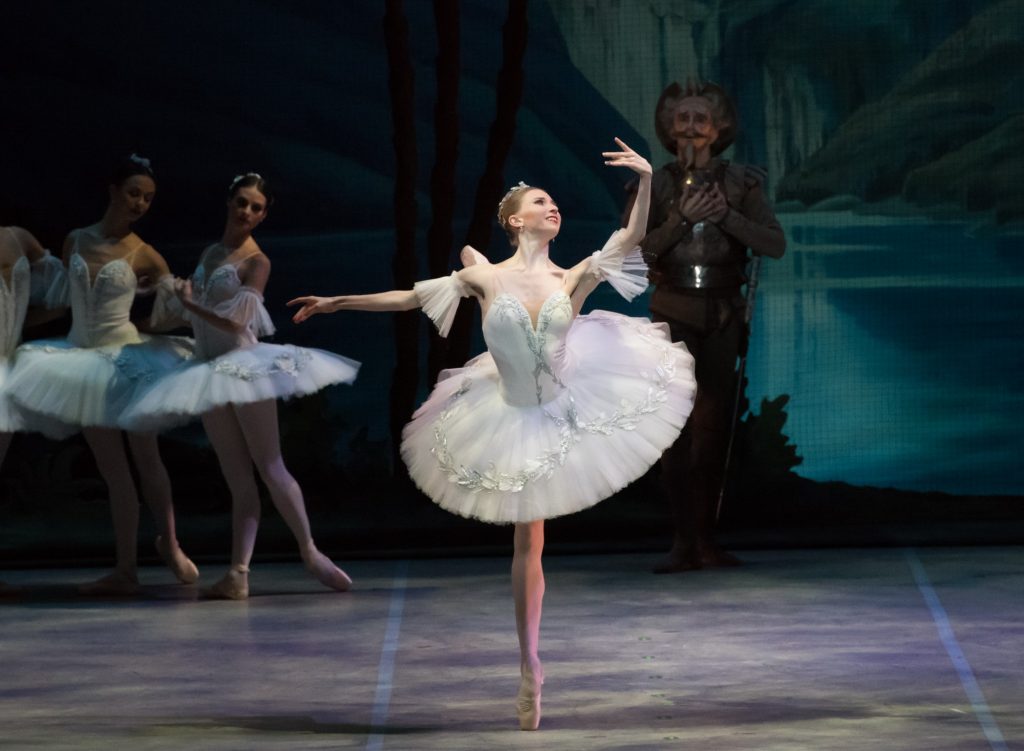DANCING AT WINDMILLS
It’s surprising for those who have never seen this ballet before, but Don Quixote isn’t really about that legendary knight who is forever battling evil and seeking his Dulcinea. In fact, the Don is only an ancillary character in the ballet, which centers around two young Spanish lovers, Kitri and Basilio, who wish to wed, but Kitri’s father, Lorenzo, demands that she spend eternity ’¦ I mean ’¦ the rest of her life with a ridiculous but very rich fop, Gamache.
Where does the Don come in? He and his sidekick, Sancho Panza, inadvertently get the couple married. Here’s my advice: don’t worry at all about the silly plot as it’s not even close to being essential for you to enjoy this rollicking, colorful delight from the Mikhailovsky Theatre. As with many story ballets in the repertoire, this was originally choreographed by Marius Petipa in 1869. It is Petipa who ensured that ballet would entail remarkable dancing, vigorous music and a terrific time for spectators. The Mikhailovsky’s production — the version cemented by Alexander Gorsky for the Bolshoi Theatre of Moscow in 1900 — shows off Petipa’s famous humor with aplomb. It is a jauntily floating effort with amazing dancing and a slew of witty characters.
The draw (and most outstanding dancer) at last Saturday evening’s performance at Segerstrom Hall in Costa Mesa was Ivan Vasiliev, who had delightful comic timing as Basilio. While I would have preferred seeing him and his European partner in crime, Natalia Osipova, his sky-high leaps, luxurious landings and speedy turns à la seconde always impressed. He is clearly more musclebound then a few years ago — affecting just a few maneuvers — but who cares with those tours en l’air and pirouettes? He’s always been something of a slight dancer physically, so it was stunning to see him lift Angelina Vorontsova aloft with one hand.
Vorontsova’s Kitri was sadly below par, as she was always a bit off center in her turns. It’s her job to do the work, while Vasiliev stabilizes her and helps a bit with his hands on her waist, but she was a little wobbly. During her Act I variation, her jumps with kicks to the back of her head impressed, but her turns at the end of this solo were somewhat slow. In Acts II and III, however, she really came to life. Her hops en pointe during the dream sequence (yeah, there’s a dream sequence) were exquisitely performed.
As the toreador Espada, Alexander Omar brought tangible hilarity to his Act II variation; he always moved with unpretentious Spanish élan (although there were a few cape twirls that went awry). Ella Persson was lovely as the Street Dancer, and, as the Queen of the Dryads, Andrea Laššáková captivated with flexible footwork, delightful leaps and graceful lines. As Sancho Panza, Alexey Kuznetsov stole the show with his acrobatics. The audience was most vocal when the toreadors used a blanket as a trampoline, hurling him around like a flapjack.
(Just a quick aside here to illuminate how silly the plot is, even though there is a windmill: Neither Espada, the Street Dancer, nor the Queen of the Dryads are even mentioned in the program’s synopsis.)
My one disappointment is synchronization. Rarely is the corps matching; members are just slightly off from one another, either with hands or elevations, and it looks a bit sloppy. This has almost become de rigueur with ballet these days, but it’s disheartening. As pleasant and fun as this outing was, it could have been thrilling (was this the responsibility of stager Mikhail Messerer?). Still, this 2012 production retains those gorgeous backdrops and costumes by Vyacheslav Okunev, exquisite lighting by Alexander Kibitkin, and a riot of color — not to mention a live horse and ass.
The Mikhailovsky Orchestra, conducted with extreme dynamics by Pavel Sorokin, made the ornamented score by Ludwig Minkus twinkle, not always easy as there is no dramatic arc here á la Tchaikovsky. There’s but a few tuneful and enjoyable dances, yet it happens to be quite radiant, with colorful and exotic orchestral coloring and some brooding yet lovely melodic lines. The three-act opera was truly an enchanting experience.
photos by Doug Gifford
Don Quixote
Mikhailovsky Ballet
Segerstrom Center for the Arts in Costa Mesa
ends on Sunday, November 11, 2018
for tickets, call 714.556.2787 or visit SCFTA

